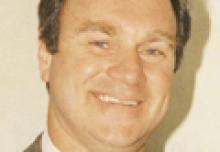LOS ANGELES—Most cases of new daily persistent headache (NDPH) are associated with a precipitating event such as a flu-like or viral illness, according to research presented at the 56th Annual Scientific Meeting of the American Headache Society. The study results are consistent with other research that identified flu-like or viral illness and upper respiratory infection as the most common precipitants of NDPH.
“Given this association, the question arises whether NDPH should be more properly classified as a secondary headache disorder similar to post-traumatic headache,” said Robert P. Cowan, MD, Clinical Professor of Neurology and Neurological Sciences at Stanford Hospital and Clinics in California. “Further research is needed to better understand the underlying mechanism of NDPH to guide more effective treatment options.”
Dr. Cowan and colleagues searched Stanford’s medical records for patients admitted between January 2005 and January 2014 with NDPH. The researchers found 85 individuals coded with NDPH, 38 of whom met the diagnostic criteria in the 2013 International Classification of Headache Disorders III (beta). The team reviewed these patients’ charts in detail.
Approximately 53% of patients with NDPH were male, 55% were Caucasian, and 8% were Asian. The majority of patients (62%) had migrainous features such as photophobia (46%) or phonophobia (46%). About 38% of patients had nausea. In addition, 58% of patients had pressure-like pain similar to that of tension-type headache.
Nearly all patients (92%) had a normal neurologic exam. Approximately 56% of patients had a family history of headache, and 24% had a history of migraine or primary headache disorder. About three-quarters of patients associated an inciting event with the onset of their headache. The inciting event was a preceding infection for 45% of patients, recent surgery for 24% of patients, psychologic stress for 10% of patients, trauma for 7% of patients, and other inciting event for 14%.
“Our data suggest that NDPH is an uncommon diagnosis, even in the quaternary headache center setting,” said Dr. Cowan. “Of the 3,579 patients seen by the Stanford Headache Clinic since its opening in July 2011, only 35 (1%) met diagnostic criteria for NDPH … and 78 (2%) met criteria for post-traumatic headache, while 2,604 (73%) had a diagnosis of migraine, with the remainder of patients having other primary and secondary headache disorders.”
—Erik Greb


